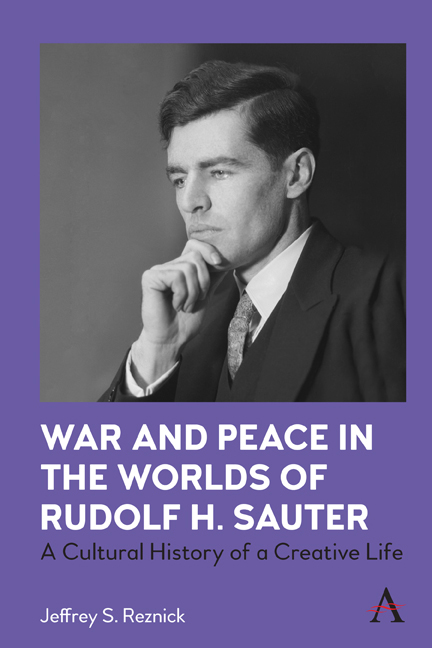Book contents
- Frontmatter
- Contents
- List of tables and figures
- Acknowledgments
- Introduction: Reconstructing a Creative Life
- Chapter 1 Beginnings, 1890–1914
- Chapter 2 Internment, 1914–19
- Chapter 3 Recovery, 1919– 24
- Chapter 4 Artistry I, 1924–39
- Chapter 5 Artistry II, 1939–50
- Chapter 6 Reflections, 1950–77
- Conclusion: Legacy
- Epilogue: In His Own Words
- Selected Bibliography
- Index
Introduction: Reconstructing a Creative Life
Published online by Cambridge University Press: 13 May 2022
- Frontmatter
- Contents
- List of tables and figures
- Acknowledgments
- Introduction: Reconstructing a Creative Life
- Chapter 1 Beginnings, 1890–1914
- Chapter 2 Internment, 1914–19
- Chapter 3 Recovery, 1919– 24
- Chapter 4 Artistry I, 1924–39
- Chapter 5 Artistry II, 1939–50
- Chapter 6 Reflections, 1950–77
- Conclusion: Legacy
- Epilogue: In His Own Words
- Selected Bibliography
- Index
Summary
On June 16, 1977, the Birmingham Post informed its readers that “a Gloucestershire artist and author, Mr. Rudolf Sauter, has died at Stroud hospital, aged 82.” The announcement continued: “Mr. Sauter, of Butterow, Stroud, was the nephew of John Galsworthy. He wrote poems, plays and a biography of Galsworthy.” Sauter’s passing was noteworthy to the Birmingham community because he had donated papers of his uncle—the famed Nobel Prize-winning novelist—to the University of Birmingham. As the newspaper reported a few months later, Sauter left additional Galsworthy papers to the institution, including “many family papers,” therefore making the collection “the most comprehensive in the world.” Significantly, the Birmingham Post was silent on the fact Sauter’s further bequest to the university included his own papers which documented his life as an artist and trustee of the Galsworthy legacy.
These newspaper articles are an ideal touchstone for introducing this first book to examine Sauter’s creative life and legacy. They rightly reflect his close and public association with his uncle who loved him like the son he never had. Yet, these articles obscure the richness and complexity of Sauter’s life as an artist and the variety of events that shaped it, particularly his internment during the Great War as an “enemy alien,” due to his German identity. At the same time, these articles provoke many questions about his life: As an artist, poet, playwright and writer what were the subjects of his work? What were his inspirations and motivations in choosing these subjects? Where, when and under what circumstances did he display and publish his work? How were his various productions received?
This book answers these questions and many more, revealing Sauter as a singular creative figure and cultural observer whose body of artistic, literary and theatrical work spanned three-quarters of the twentieth century and reflected the subjects of war, love, memory and concerns of modern times, including the environment and nuclear war. It is organized chronologically and thematically, with emphases throughout on places and spaces as frameworks to reconstitute and contextualize Sauter’s creative worlds in war and peace. Broad physical environments, like neighborhoods and landscapes, figure prominently in the narrative, as do smaller spaces, namely studios, around which Sauter’s creative life took shape and grew meaningfully.
- Type
- Chapter
- Information
- War and Peace in the Worlds of Rudolf H. SauterA Cultural History of a Creative Life, pp. 1 - 10Publisher: Anthem PressPrint publication year: 2022

